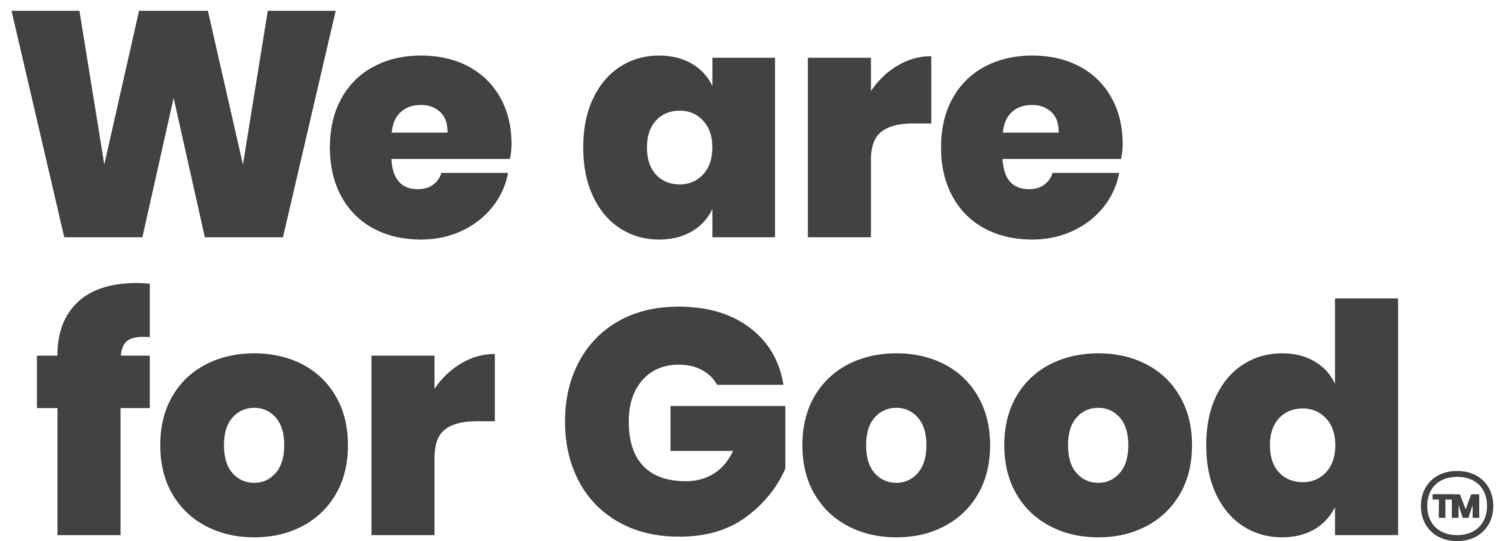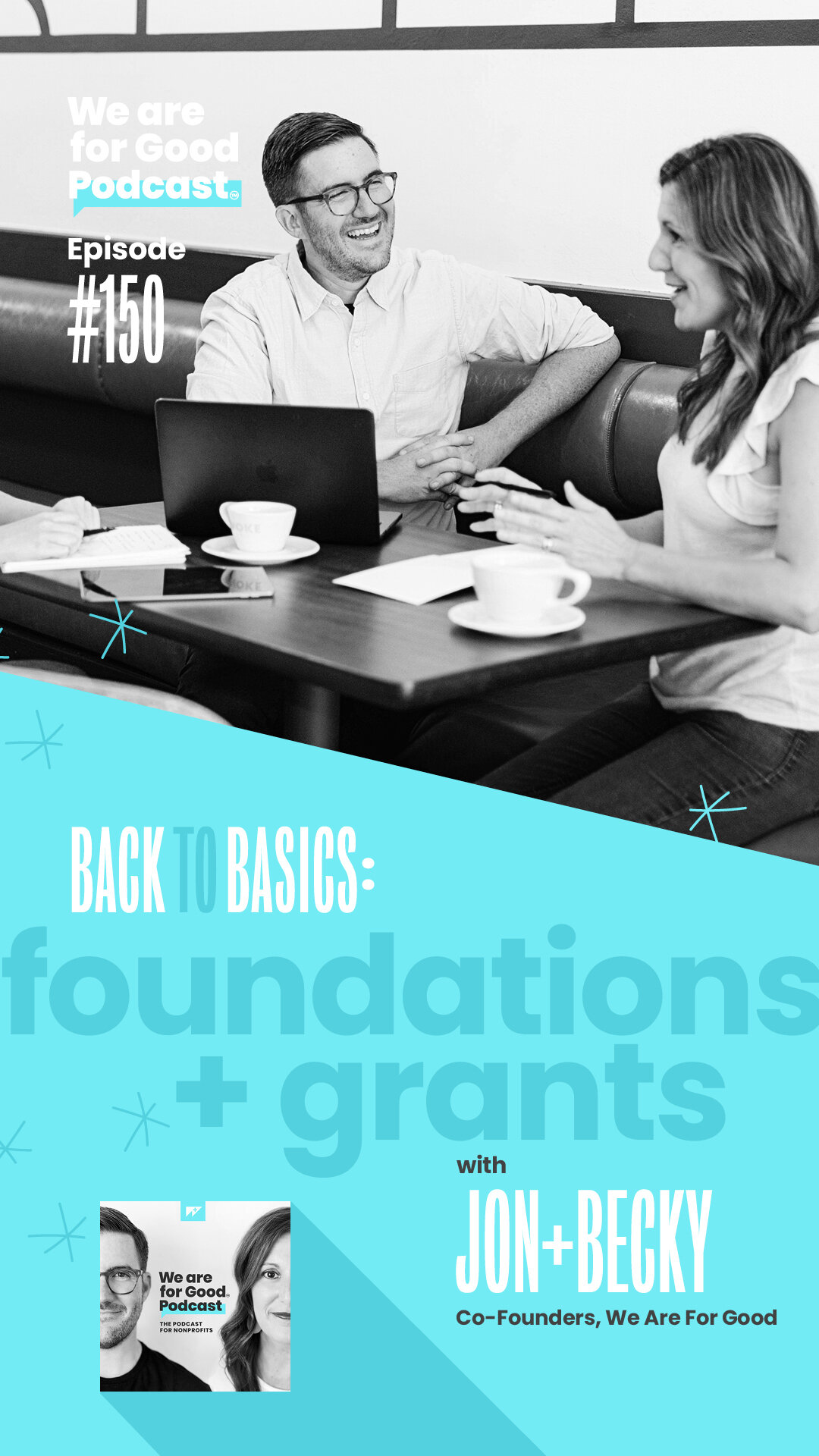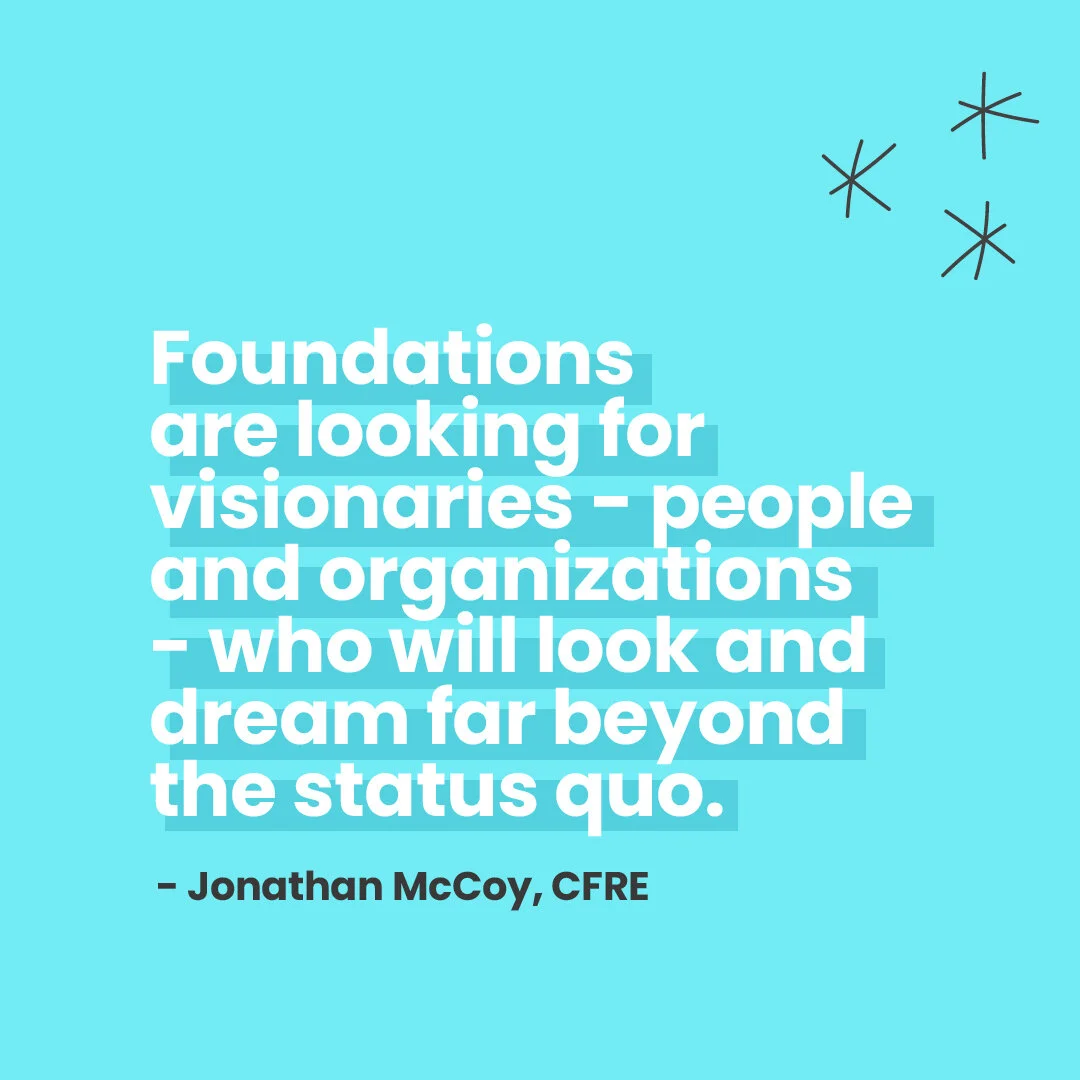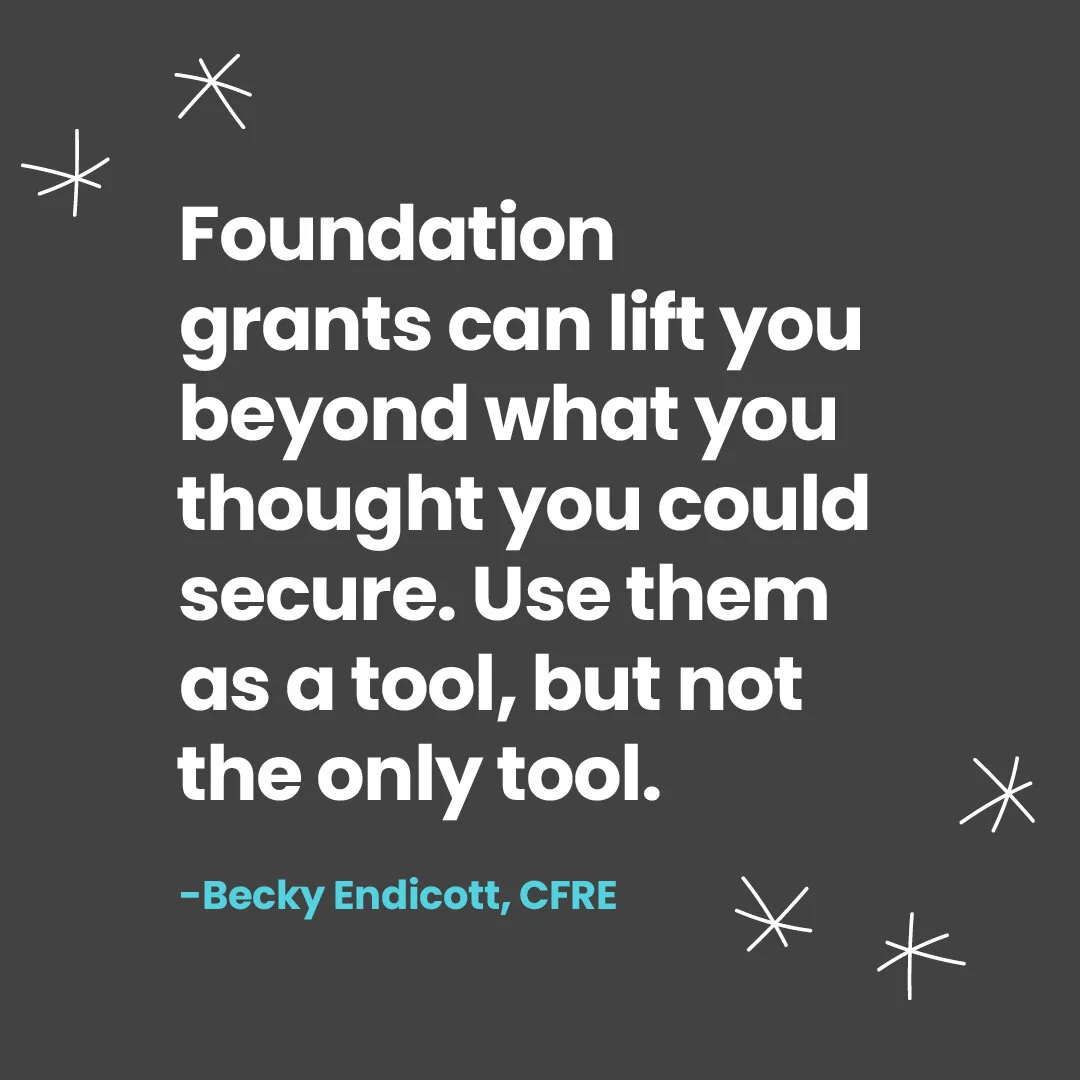150. Back to Basics Foundations and Grants - Jonathan McCoy, CFRE and Becky Endicott, CFRE
Listen to this episode
Overview
Let's be real for a hot moment. Working with foundations is intimidating. Writing a grant is intimidating. And when you're not entirely sure of the process, it all seems like an incredible mountain to climb. Don't worry! We're walking through all the questions our junior-selves wanted to know about foundation relations when we were younger: the step-by-step process of a grant cycle, testing your grant readiness, and that ever-present We Are For Good arc to the conversation challenging you to be human, wholly engaging and building partnerships rather than just relationships. Join us as we chat Back to Basics: Foundations & Grants and change everything you thought you knew about this process.
“Foundations are looking for visionaries and people and organizations who will look and dream far beyond the status quo. Find these investors that want to invest in a program that can change your community.”
Episode Transcript
Download Full Episode Transcript Here
Episode Overview
Giving USA Report: Foundation giving grew faster than any other source in 2020, at a rate of 17% (3:30)
Key definitions (4:50)
Back to basics: foundations and grants (9:00)
The lifecycle of a grant (13:10)
Where to get started today (18:45)
Questions to ask yourself before pursuing a grant (20:50)
Take the risk your challenge deserves (27:00)
Powerful quotes
“Grant is just a fancy word for a donation.” -Jon
“We want to put the emphasis on connecting on values.” -Jon
“Don’t let foundations and grants be the end all be all for revenue generation for your organization.” -Jon
“Foundation grants can lift you beyond what you thought you could secure. Use them as a tool, but not the only tool.” -Becky
“What face do you want them seeing when they go through your grant application? Are you telling a great story? Do they want to be a part of serving that individual? “ -Becky
“When you pair really great data with a really great story, you become irresistible. If you equip program officers with all the information they need, they can be an ally for you within their organization.” -Jon
“A lot of work needs to happen before you get to the paperwork.” -Jon
“Foundations are looking for visionaries and people who will look and dream far beyond the status quo. Find these investors that want to invest in a program that can change your community.” -Jon
Back to basics: key definitions
A foundation is often a grant-making entity. It’s organized as a nonprofit that exists to give out money, in the form of grants, to other nonprofits, in order to bring about positive change as outlined by its mission
Private - money comes from a family, an individual, or a corporation. An example of a private foundation is the Ford Foundation. Private foundations must meet a "payout requirement," meaning they have to give away a certain amount of their assets every year.
Public - raises money through different sources such as foundations, individuals, and government agencies. Most community foundations are also grantmaking public charities.
Most foundations have their own board of directors, a staff (typically including a program officer) and may or may not undertake their own fundraising to help fund their grants.
Remember: grant is just a fancy word for donation.
We Are For Good Basics: Foundations and Grants
Do your homework before you reach out: audit website, social channels, 990 for list of last year’s beneficiaries, etc.
Be sure to review their granting guidelines to ensure you meet all their funding requirements
Then pick up the phone. Call the program officer. #sorrynotsorry
Don’t just submit a grant. Build an equitably balanced partnership with a foundation staff member. Then unite your efforts to present the best possible joint case of support for board consideration.
Get to know the foundation’s trustees/board of directors.
Check the foundation’s website or review their 990 for a board listing.
The power of peer-to-peer engagement
When cultivating a Foundation, your funding chances are greatly enhanced by leveraging peer-to-peer engagement.
Foundations can be highly political in certain communities. Identify volunteers/board members/donors who are passionate about your mission who may have connections to the granting foundation’s advisory board.
Activate them with a quick, but specific request.
DO NOT execute rapid fire grant application submissions as a response to financial pearl-clutching within your organization.
Grants are the not the solution to your revenue gap. You need an engagement strategy first before you dive into one-off donations.
Never submit a grant application without first talking to someone in the foundation first (unless directed to do otherwise) about your project, timeline, and if there is alignment/interest/growth potential.
👉 The Lifecycle of a Grant - Step-by-step process
Foundation evaluates annual earnings, establishes a granting budget and outlines annual priorities.
Publishes guidelines detailing the specific areas of focus successful applicants should align their requests. Post their grant application with deadlines and timeline of decision milestones.
Once applications are submitted, foundation staff review, may ask applicants for more information or clarifications. Program officers or staff members evaluate whether each application meets minimum criteria. Then applications are ranked or prioritized.
Strongest, most aligned applications are sent to the board or working committee.
With significant guidance and feedback from the program officer, executive director or other staff members, advisers review the applications and make funding decisions.
Cue the magical call or letter notifying you of the award. (cue: immediate thank you call from you, your organization’s leader and/or board chair. Then a handwritten note. And don’t forget the gift receipt)
Grants are funded and the grant recipients file any reports required by the foundation.
Spend funds according to exact standards outlined in the award letter then track financial and impact numbers for final report.
Grant Readiness
Define your program and your Why?
Build a master grant calendar
Create a prospect list
Starting place: Foundation Directory if you have roughly $350/yr for membership or simply try your good friends Google, FB, etc.
Do your research! Scour their website, understand their core funding areas, review blank applications, check social channels, examine their 990, note their board members, etc.
Decide which foundations to apply, outline ask amounts, determine key contact, and ensure you have enough staff time to execute.
Ask Yourself These Questions Before Pursuing A Grant- courtesy of the Fundraising Authority
Who will head up our grant program?
How will we find foundations to approach?
Who will write the grants?
How much time and effort can we spare in approaching foundations?
If offer to apply is extended, we must ask ourselves:
Who will track our impact for follow-up reporting?
Who would potentially make a presentation?
Dulari’s Tips for Building Successful Relationships with Foundations & Program Officers - (Don’t miss episode 47!)
Tell a good story.
Provide consistent, concise, and clear information. Funders can’t be ambassadors for your organization if they don’t understand it.
First impressions matter.
An impactful, cold email can help you. In this digital age, connections can also be made online.
Make every conversation worth it. What can you advance?
Remember: funders are people too. Their intention is to be involved as a partner in your project and initiative.
There is so much work that is done before the application process. Build the right ideas and have the right conversations. The paperwork is the last step.
I'm a big fan of no surprises. I shouldn’t be surprised by anything that’s in that grant application.
Take the risk your challenge deserves.
Foundations and Grants Playlist
47. How to Bring Your Best Self to Grant Applications - Dulari Gandhi












